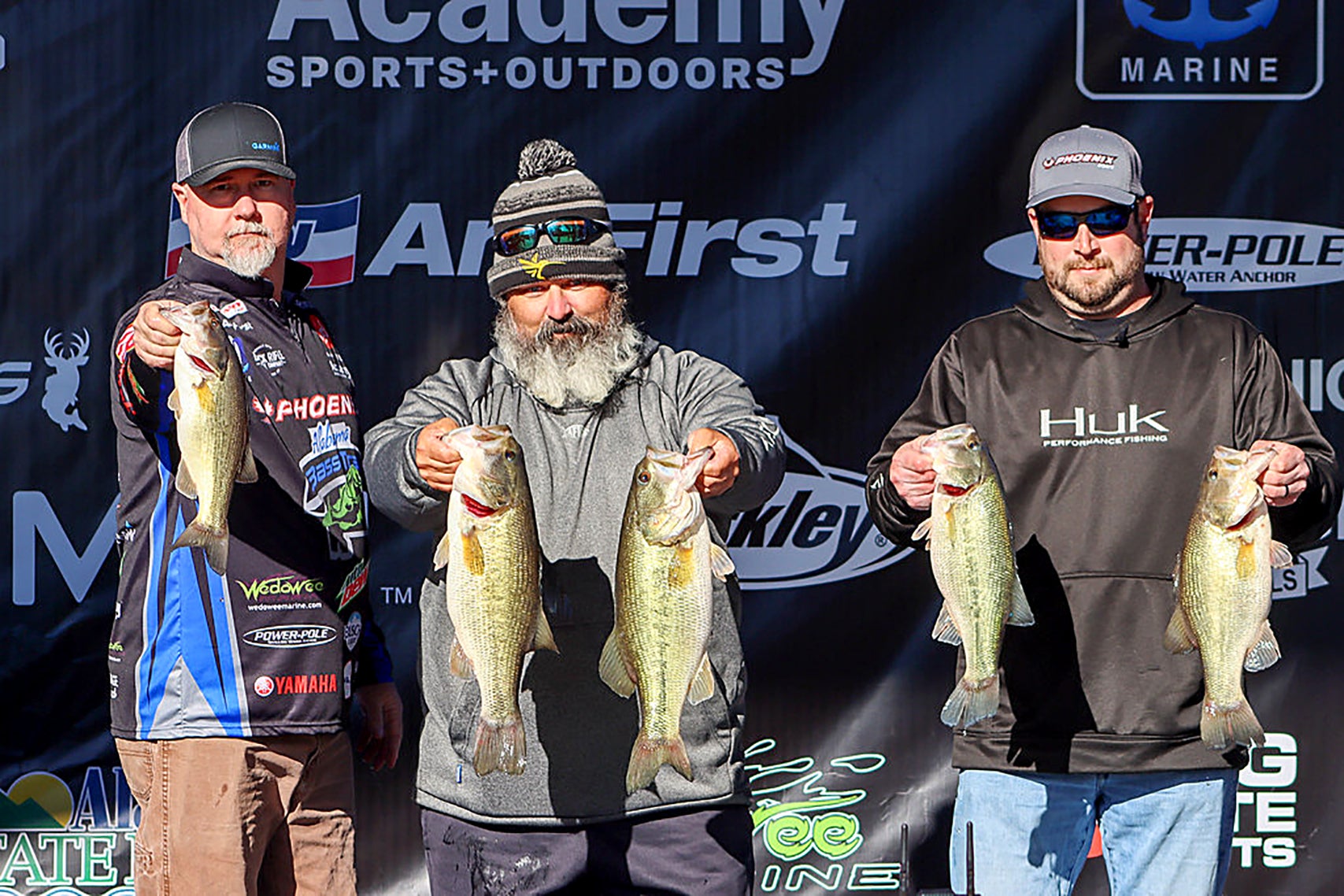By DAVID RAINER, Alabama Department of Conservation and Natural Resources
Keith Henderson, Fisheries Development Supervisor with the Alabama Department of Conservation and Natural Resources’ Wildlife and Freshwater Fisheries (WFF) Division, is busy tweaking the annual BAIT report on bass fishing in the state.
The Bass Angler Information Team (BAIT) report takes bass tournament results from across the state and creates a comprehensive summary of the results. The report compares results on an annual basis and relates them to historical statewide tournament data, and also by reservoir comparisons, creating a ranking system based on different criteria.
Henderson has recently taken over the program and has been busy updating the tournament and BAIT website as well as restructuring the BAIT report.
“All the information we collect and what we analyze stays the same,” Henderson said. “I’m working on getting this information to the public quicker.”
Henderson has created a new interactive map on the website that allows him to share some of the summarized tournament data long before the BAIT report is published.
“We have updated our BAIT webpage and included the interactive map,” he said. “I upload some of the important data on the website before the final BAIT report is published.”
The COVID-19 pandemic hasn’t made that effort easier for Henderson and his cohorts.
“We’ve had a drop in participation, and in 2020 we had a COVID year with a huge drop-off in tournaments,” he said. “We had to decide what we could present and what we couldn’t depending on the sample size of tournaments.”
WFF uses five quality indicators to determine each year’s rankings – percent success, average bass weight, bass per angler day, pounds per angler day and the length of time to catch a five-pound bass.
“Percent success looks at the percentage of time anglers catch at least one bass per tournament,” Henderson said. “The average bass weight is derived from every bass weighed in. The bass per angler day looks at the number of fish that are weighed in per 10 hours of fishing. Pound per angler day is the average bag weight per 10 hours of fishing. Length of time to catch a 5-pound bass calculates this estimate, and the reservoirs with the fewest hours gets a higher ranking.”
The statewide BAIT statistics showed a 14.03-pound average winning weight per five fish, 3.54 as the number of bass weighed in per angler per day, 7.67 pounds as the pounds of bass weighed in per angler per day, 2.17 pounds as the average weight of bass caught, 390 hours to catch a 5-pound bass, 9.58 pounds for the largest bass caught, six bass 8 pounds or larger were caught, and 180 bass were 5 pounds or larger. The species included in the report are largemouth bass, smallmouth bass and spotted bass.
“This allows us to rank the reservoirs by percent success (anglers catching at least one fish), overall catch, largest average size bass and time required to catch a bass 5 pounds or larger,” Henderson said. “We take all that into account to determine overall rankings.”
Henderson cautions that the rankings are not necessarily determining the best overall reservoir because it does not account for biological factors, but it gives anglers some idea of where they might have the most success.
The effects of COVID on fishing and fishing tournaments turned out to be a paradox. On one hand, the number of people fishing during the pandemic increased significantly. However, the number of bass tournaments were down significantly.
“People fished a whole lot during that time, but tournaments were pretty much shut down,” Henderson said. “We didn’t get nearly as much data during that period. There was a significant reduction in BAIT tournament reports, especially during the prime fishing time. The preferred time for most anglers is in the spring. So, it makes it hard to compare 2020 to previous years, but we were still able to gather some important information.”








